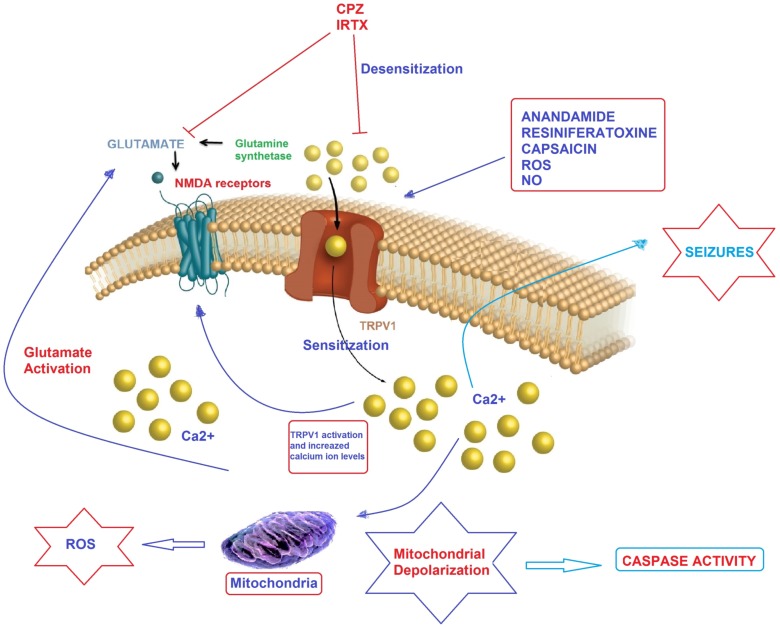Fig. (1).
Possible molecular pathways of TRPV1 channel activation on epilepsy in hippocampal neurons. Convulsions in epilepsy can results in augmented glutamate release, leading to Ca2+ uptake through NMDA receptor and TRP channels. Mitochondria were reported to accumulate Ca2+ provided cytosolic Ca2+ rises, thereby leading to depolarization of mitochondrial membranes. At the extreme, Ca2+ entry causes severe mitochondrial permeability transition or even the rupture of the mitochondrial membrane, substantial swelling of the mitochondria with rupture of the outer membrane and release of apoptosis-inducing factors such as caspase 3 and 9. Anandamide, capsaicin, resiniferatoxin, nitric oxide (NO) and reactive oxygen species (ROS) induce Ca2+ accumulation through desensitization of TRPV1 channels although pharmacological desensitization of TRPV1 channels through antagonists such as capsazepine (CPZ) and 5'-iodoresiniferatoxin (IRTX) contributes to an immediate reduction on neuronal excitability [78]. ROS enhance also spontaneous release of glutamate from presynaptic terminals onto neurons through TRPV1 channel activation. The molecular pathway may be a cause of epileptic seizures and the subject should urgently investigate.

